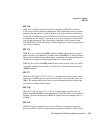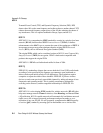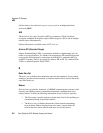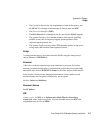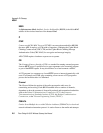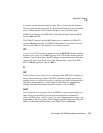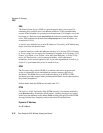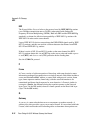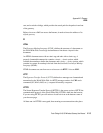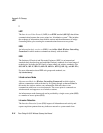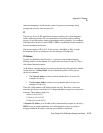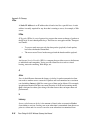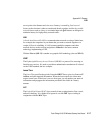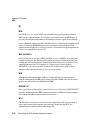Psion Teklogix 9160 G2 Wireless Gateway User Manual E-11
Appendix E: Glossary
EAP
E
EAP
The Extensible Authentication Protocol (EAP) is an authentication protocol that
supports multiple methods, such as token cards, Kerberos, one-time passwords,
certificates, public key authentication, and smart cards.
Variations on EAP include EAP Cisco Wireless (LEAP), Protected EAP (PEAP),
EAP-TLS, and EAP Tunnelled TLS (EAP-TTLS).
EDCF
Enhanced Distribution Control Function is an extension of DCF. EDCF, a
component of the IEEE Wireless Multimedia (WMM) standard, provides prioritized
access to the wireless medium.
ESS
An extended service set (ESS) is an Infrastructure Mode Wireless Networking
Framework with multiple access points, forming a single subnetwork that can
support more clients than a basic service set (BSS). Each access point supports a
number of wireless stations, providing broader wireless coverage for a large space,
for example, an office.
Ethernet
Ethernet is a local-area network (LAN) architecture supporting data transfer rates of
10 Mbps to 1 Gbps. The Ethernet specification is the basis for the IEEE 802.3
standard, which specifies the physical and lower software layers. It uses the
CSMA/CA access method to handle simultaneous demands.
Ethernet supports data rates of 10 Mbps, Fast Ethernet supports 100 Mbps, and
Gigabit Ethernet supports 1 Gbps. Its cables are classified as “XbaseY”, where X is
the data rate in Mbps and Y is the category of cabling. The original cable was
10base5 (Thicknet or “Yellow Cable”). Some others are 10base2 (Cheapernet),
10baseT (Twisted Pair), and 100baseT (Fast Ethernet). The latter two are commonly
supplied using CAT5 cabling with RJ-45 connectors. There is also 1000baseT
(Gigabit Ethernet).



